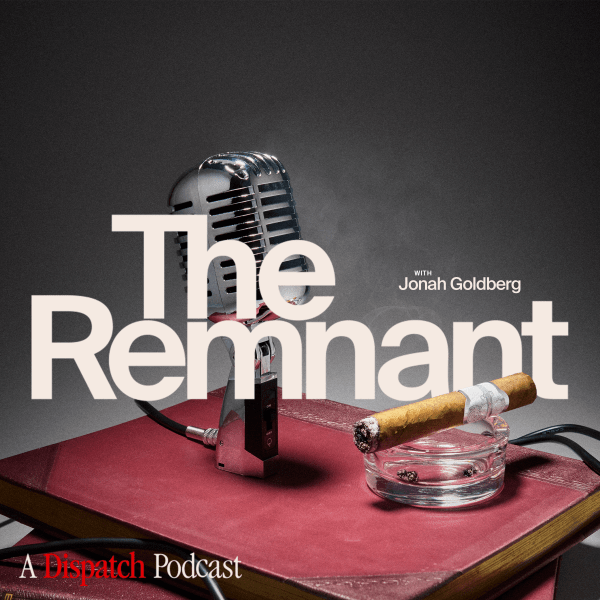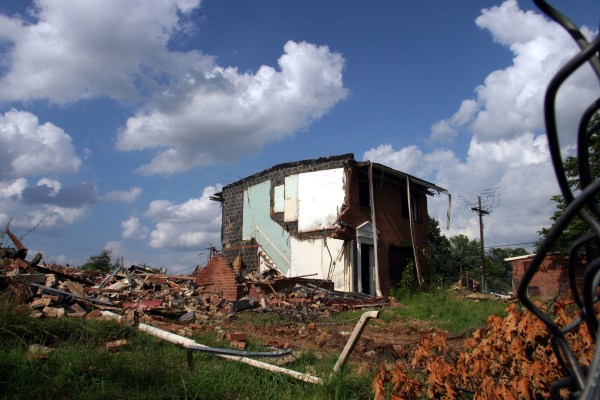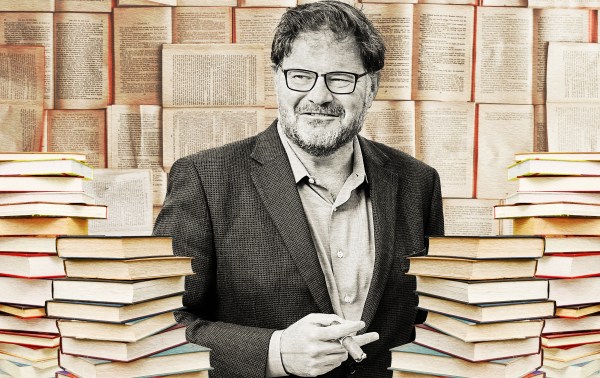Last month, two of my colleagues at the American Enterprise Institute (Brad Wilcox and Lyman Stone), along with co-authors from the Wheatley Foundation and the Institute for Family Studies, published an important new paper on the state of family formation in the wake of the Covid-19 pandemic. It’s a fascinating study, well worth your while, which reviews new data about American attitudes toward marriage and child-bearing and puts them in some historical context.
What struck the authors most about the trends they discerned was their bifurcation along economic, cultural, and political lines. Wealthier Americans are more interested in marriage and kids than those with lower incomes. And, maybe less surprisingly, religious Americans and those inclined to vote Republican are also more interested in forming traditional families than those who are secular and on the left. These aren’t new trends, but the pandemic looks to be reinforcing them, for reasons the authors discuss.
But I was most struck by something else about the portrait they paint. The report embodies a significant change in how we think about the basic character of social breakdown in America, and what we take to be the obstacles to human flourishing in our time. This different understanding isn’t quite new either, but it is often left implicit, so its full significance has been slow to hit us.
Not long ago, it would have been taken for granted that social order in our free society is a function of our capacity to restrain and govern our most intense longings. Human beings are moved by passionate desires for things like pleasure, status, wealth, and power. But these intense desires can deform our lives if we don’t subject them to some structure and moderation through marriage, schooling, work, religion, and other binding commitments. Disordered lives are a product of rushing in recklessly, so that sex or children come too soon while responsibility comes too late if at all.
But a lot of contemporary social science, like this important new report, has come to be quietly premised in a different understanding of disorder. Rather than seeing the drive to have children as a force to be channeled and domesticated by marriage, for instance, we have come to see both the desire for marriage and the desire for kids as endangered and in decline. And more broadly, the challenges to America’s social order now seem less like exorbitant human desires driving people’s lives out of control and more like an absence of energy and drive leaving people languishing and enervated. These are very different kinds of social problems that call for different sorts of responses. We can all perceive the shift from one toward the other in this century, but our cultural and political thinking has been slow to catch up.
The shift is evident in what the report, like a great deal of other social science in recent years, describes as a mix of good and bad news about American society. The good news is that some of the most troubling social trends of the second half of the 20th century have been abating in our time. Last year, for instance, the U.S. divorce rate hit a 50-year low. Teen pregnancies are at the lowest rate seen since they began to be systematically tracked in the 1930s, and the rate continues to plummet: In 2018, the teen-pregnancy rate was half of what it was in 2008. Even the rate of out-of-wedlock births, which had been climbing steadily since the 1950s, peaked around 2008 and has been declining modestly since—from 52 births per 1,000 unmarried women that year to 40 in 2019. The abortion rate has also been steadily falling, and is now probably lower than it was before the Supreme Court nullified all state abortion restrictions in 1973.
The bad news is that rates of more positive behaviors are declining too. Most notably, both marriage rates and fertility rates are at all-time lows in the United States. Total fertility in our country is now about 1.7 births per woman, well below the population-replacement rate. Younger Americans are having trouble pairing off—so that not only teen sex but also teen dating have dipped dramatically.
This mix of seemingly good and bad news is no paradox. The good news is often just one consequence of the bad. There are fewer divorces because there are fewer marriages, and so more of those that begin survive. There are fewer abortions because there are fewer pregnancies, and so more of those that happen are wanted. There are fewer out-of-wedlock births because there are fewer births in general. The same pattern is evident beyond sexuality and family too. Fewer teenagers are dying in car accidents because fewer teenagers are getting driver’s licenses. There is less social disorder, we might say, because there is less social life. We are doing less of everything together, so that what we do is a little more tidy and controlled.
There’s a case for welcoming all this on net. If social dysfunction is essentially a breakdown of discipline—if the core social problem is unruliness—then American life is getting better. We should want fewer people suffering the consequences of disorder, and it’s a good thing that more people’s lives answer to their own choices and preferences.
But that case is ultimately unpersuasive because the greatest virtues of a social order are not functions of its ability to restrain commotion or even to empower choice but of its capacity to enable human flourishing. To opt for perfect peace and quiet is to opt for death. The problem with broken families and communities is not that they are unchosen but that they are unhealthy and unsuited to making us happy. And we are finding now that there is more than one way to be unhappy.
This is not so much a change in our definition of social dysfunction, but a change in the real-life experience of our society. For many decades in America, it seemed like the chief obstacle to human flourishing was our impulsive recalcitrance—an excess of dynamism and energy that our society failed to shape into responsibility and constructive action. Chaos broke down the lives of millions and denied the promise of the free society to countless children, who then seemed destined to fall into chaos for another generation. Too many Americans were living their lives out of order—having sex too soon, becoming parents too early, jumping into life too quickly and without restraint or preparation.
That is certainly a dangerous kind of disorder, and one that is still very much with us too. It has not gone away by any means. But it has been joined by a more profound and fundamental problem that might be best described as a disordered passivity—a failure to launch, which leaves too many Americans on the sidelines of life, unwilling or unable to jump in.
The pathologies of passivity are more fundamental challenges to flourishing because they strike deeper and earlier than the dangers of unruliness. Habits and institutions of restraint can work like sculptors of the social order—selectively chipping away at our wild, boisterous pursuit of happiness to shape it into more beautiful forms of energetic human action. But what if we fail to act on our longings to begin with? What if there is nothing to restrain, and so no raw material for the sculptor to work with? The right to pursue happiness won’t do us much good if we don’t exercise it.
Our best traditions grasp this danger. We think of the moral law enunciated in the Hebrew Bible, for instance, as a set of restraints on our appetites, articulated most concisely as a series of “thou shalt not” injunctions. But well before those laws for man in society, God’s very first commandment to human beings was a response to the risk of inertness and passivity: “Be fruitful and multiply.” Jewish mothers ever since have demanded much the same. When they implore their kids to settle down, they are not asking them to stop but to start—to get on with life. We have to worry about a failure to get going before we can worry about the dangers of going too far and pushing too hard. The dangers of inertness therefore tend to displace the dangers of recalcitrance when the two coexist.
No single cause can explain this growing challenge of passivity. It is thoroughly global, for one thing. The decline of marriage and child-bearing is much further along in much of Europe and Asia, and can be seen not only in the developed world but also in some of the poorest nations on the planet.
And even if we do try to explain the problem in an American dialect, its causes add up to a kind of multifarious portrait of the downsides of our way of life. Social inertness is surely a response in part to the breakdown of the traditional social order itself: The waning of the life scripts provided by family, religion, and widespread traditional social norms leaves younger Americans less sure of where to step and how to build their lives.
Among other things, this likely contributes to the growing tendency to look to politics for such scripts, and so to seek more assertive and moralistic social agendas, whether of the left or right. The case for such agendas easily becomes too strident and desperate, and it runs the risk of drawing some among the young into a depraved and vicious vitalism. But it is rooted in the valid perception of a moral void that is surely at the bottom of much of the pathological passivity we now encounter.
There are also more practical and material sources of this enervation. Both blue-collar and white-collar work have become less friendly to family formation in some respects in recent decades. And elements of both the right and left have been uncomfortable with the notion that encouraging marriage and parenthood should be political priorities and public-policy objectives. Yet the case for aggressive family policy has probably also overstated the material challenges to be overcome. Many younger Americans now think it was much easier than it really was for their parents to live on one income or have that additional child. They don’t recognize that their parents also wanted these things more, and were more willing to take serious risks to achieve them. The assertive family policy we need would seek to encourage today’s younger Americans to do what their parents needed less encouragement to do. The waning desire for family formation is both a cause and an effect of the waning of support for families in our economy and politics.
So while these cultural and material forces do drive a few young Americans toward combative modes of political rhetoric, they mostly add up to a rising generation acutely averse to risk, and so to every form of dynamism. Excessive risk aversion now often deforms parenting, education, work, leadership, and fellowship in our society. It is intertwined with a more general tendency toward inhibition and constriction—with Americans walking on eggshells around each other in many of our major institutions, and with codes of speech and conduct becoming increasingly prevalent. We live in a time that is prudish yet not prescriptive—that stifles the public arena while denying us recourse to private arenas and tells us how not to behave without showing us how to thrive.
We have been using our technologies to accentuate all of these tendencies. Social media have turned large swaths of our personal lives into platforms for pseudo-celebrity performance, where we display ourselves and observe others without really connecting. And they have elevated expression over action in ways that have mangled our civic and political cultures.
Particularly for Americans who live in cities, the internet has also come to mediate different parts of our real-world experience (from dating to calling a taxi to getting food at a restaurant) in ways that have let more people live as functional loners, meeting their needs with a minimum of eye contact or interpersonal risk. And countless younger Americans dissipate their erotic energies in similar seemingly riskless substitutes for human contact, particularly video games and pornography—the latter of which has grown into a hideous, colossal scourge that our society has inexplicably decided to pretend it can do nothing about.
Like most social problems, all of these are downsides of trends and transformations that have had their upsides too. Our amazingly free, mostly equal, spectacularly prosperous, broadly decent, generally level-headed, stubbornly religious, and often intensely self-critical society is not a wasteland. It is a mix of good and bad, always growing better and worse at the same time. But for those who want to think about social reform in particular, about ways of helping people who are floundering find paths to flourishing, it is essential to see the downsides and so to grasp the changing character of social breakdown.
Seeing it doesn’t mean we know what to do about it. But even just thinking a little more clearly can be useful. And the fact that the pathologies of passivity are rising alongside those of unruliness and not simply in place of them—that we need to take on both at once—can actually clarify the way forward just a bit. It highlights some of the inadequacies of how we have long thought about social policy.
The familiar case for achieving social order through self-discipline takes for granted the energy and desire for life of the people involved, and so it is a case made mostly in the negative—a case against going too far rooted in a sense of what we have to lose. But when we are compelled to make a case for exertion and activity, we take nothing for granted. And so we have to make a deeper, warmer, argument—a case against giving up that is rooted in what we have to gain not just by living but by living well. This is ultimately a stronger argument for the good life, and so against both the pathologies of unruliness and those of inertness. It points toward the broad and beautiful “yes” for the sake of which an occasional stern and strict “no” is required.
A case for discipline alone can easily grow too cold. Consider the common appeal to the “success sequence,” which reminds young Americans that if you finish school, get a job, get married, and then have children—in that order—you are very unlikely to live in poverty. This is true, and terribly important, so making it more widely known is well worth the effort. But it also depicts a person’s life in awfully cold and isolated terms.
Is a successful life really shaped by four individual choices made in the right order? Maybe that’s a way to help people avoid giving in to temptation at a critical moment. Maybe it’s a way to let liberal social scientists argue for moral living without losing tenure. Those are both worthwhile goals. But it is not a way to persuade human beings to overcome passivity and paralysis and jump into life.
A fuller understanding of flourishing would see it as achievable not by a proper sequencing of solitary choices but by a proper layering of embedded commitments to others—to parents and siblings and teachers, to coworkers and colleagues and mentors, to a beloved wife or husband and to the children you have together, to neighbors and friends, to God and to county. A life lived embedded within such relationships of obligation is the answer to all the unrequited yearnings knocking around our society now and driving everybody crazy.
Such a vision of a life well lived in loving commitment to others stands a better chance of showing people both what they have to gain by coming off the sidelines and what they have to lose by recklessness. The pathologies of passivity and of unruliness are both pernicious deviations from this more virtuous path through life, so that combatting both ought to involve helping people see that such a path might be open to them if they will act to seize it. This is now a pressing task for family, faith, and culture.
And for social policy, broadly understood, a recognition of the changing face of social breakdown ought to mean looking for ways to help people find and follow this better path. Policymakers have to translate the elevated language of virtue into a more mundane parlance of incentives, benefits, supports, protections, and prohibitions. They need to find ways to secure the space in which families and communities do their work; to reinforce rather than counteract their efforts to instill core virtues in the rising generation; to sustain the stability they need while also rewarding the willingness to risk and to venture; to put parents first when prioritizing constituencies; and to organize our country’s life around its highest ideals.
Describing these broad aims does not resolve the disputes that naturally arise around their pursuit. Politics exists to facilitate those disputes. But if we argue about how to address contemporary social breakdown in light of this fuller idea of social order, we might at least have a clearer sense of what we should work, fight, and hope for—and of what our country needs.
Yuval Levin is the director of social, cultural, and constitutional studies at the American Enterprise Institute and the editor of National Affairs.






Please note that we at The Dispatch hold ourselves, our work, and our commenters to a higher standard than other places on the internet. We welcome comments that foster genuine debate or discussion—including comments critical of us or our work—but responses that include ad hominem attacks on fellow Dispatch members or are intended to stoke fear and anger may be moderated.
With your membership, you only have the ability to comment on The Morning Dispatch articles. Consider upgrading to join the conversation everywhere.